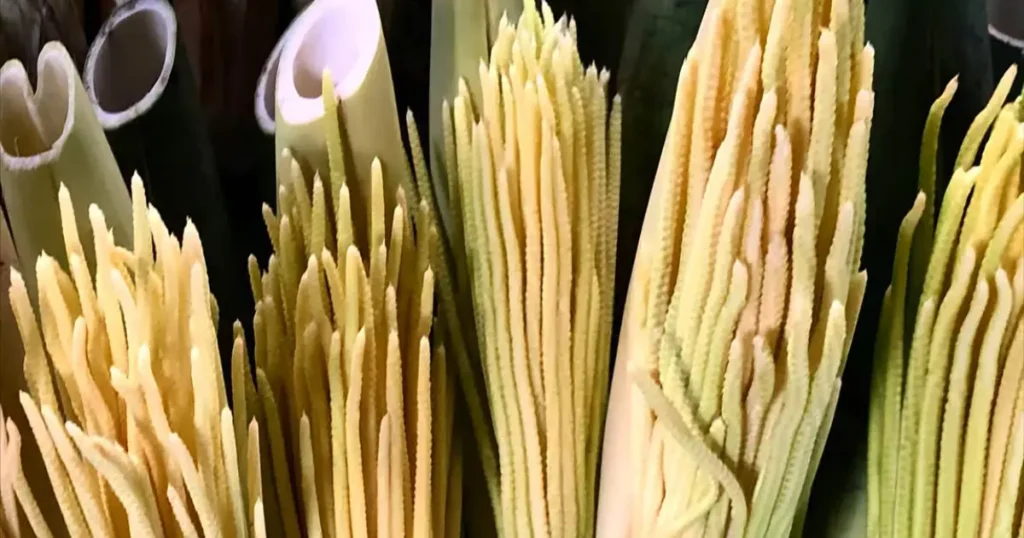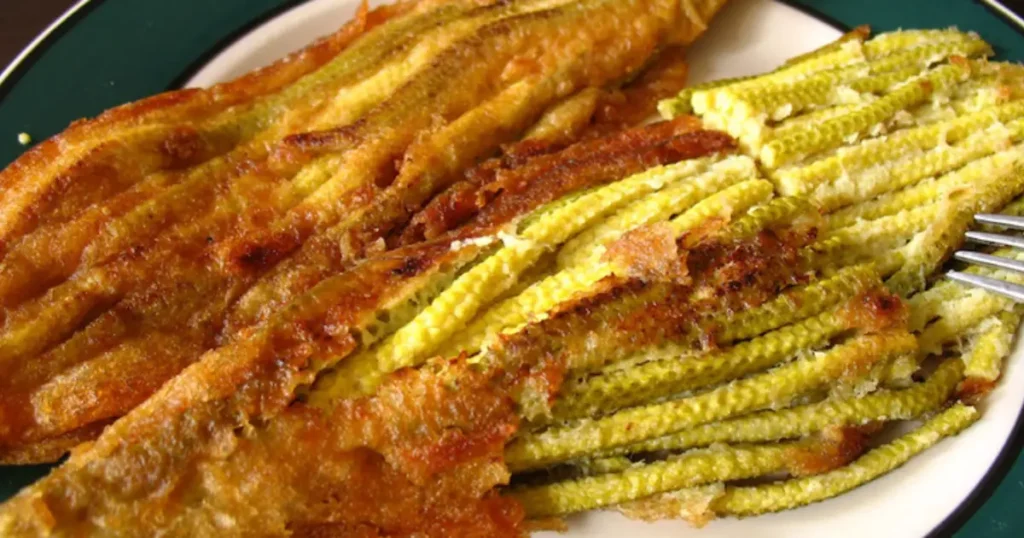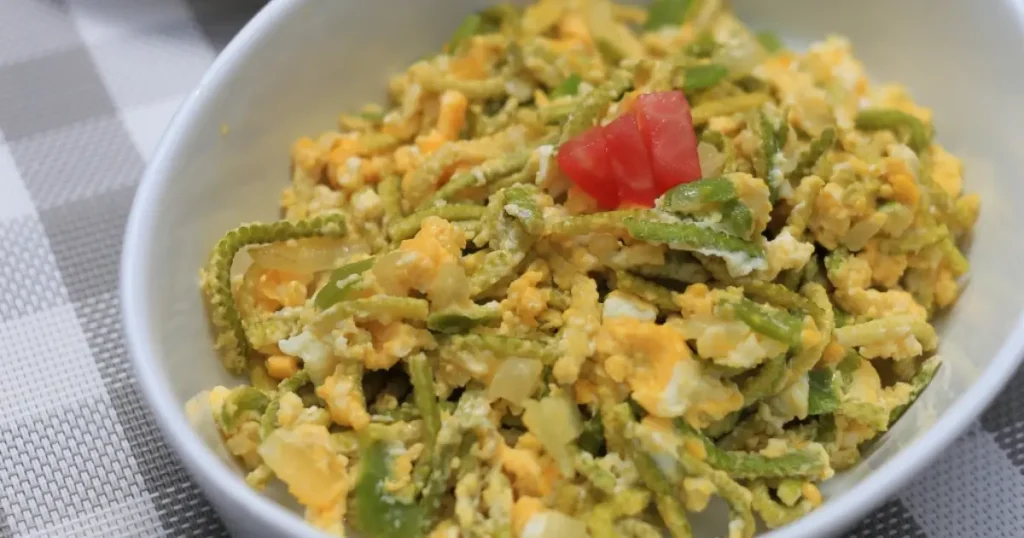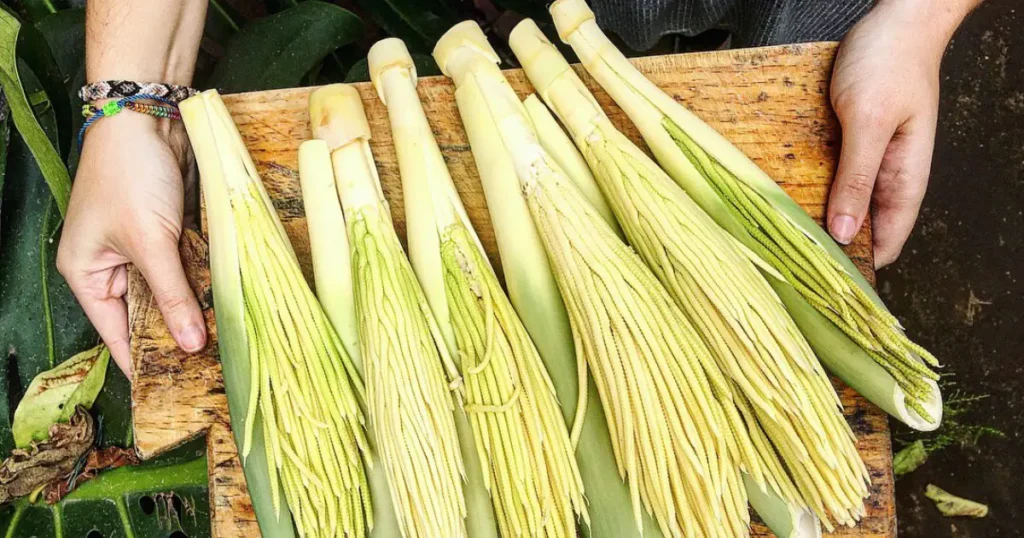Pacaya Food: Guatemala's Unique Edible Palm Flower & Recipes

Guatemalan cuisine is a vibrant tapestry woven with ancient Mayan traditions, Spanish colonial influences, and a rich biodiversity that provides an astonishing array of unique ingredients. Among these, one that stands out for its distinctive appearance and intriguing taste is the Pacaya.
More than just a food item, Pacaya is a cultural emblem, a versatile ingredient, and a testament to Guatemala's rich culinary heritage. Join us as we delve into the world of Pacaya, exploring its origins, popular preparations, and why it holds a special place in the hearts and on the tables of Guatemalans.
What Exactly is Pacaya?

Pacaya, scientifically known as Chamaedorea tepejilote, is the unopened male inflorescence (flower cluster) of a specific type of palm tree native to Mexico, Central America, and parts of Colombia. What appears on your plate is essentially a cluster of small, tender, corn-like strands, often still encased in its protective outer sheaths or sold as individual "fingers."
The flavor profile of Pacaya is its most debated and distinctive characteristic. It possesses a notable bitterness, often described as earthy, with a slightly nutty undertone. This inherent bitterness is precisely what many aficionados appreciate, as it provides a stark and delightful contrast to other ingredients in a dish. For those new to Pacaya, the initial taste can be surprising, but it quickly grows on the palate, especially when prepared using traditional Guatemalan methods designed to balance and complement its unique flavor.
Pacaya in the Heart of Guatemalan Cuisine
Pacaya is a beloved ingredient across Guatemala, finding its way into a variety of dishes, each showcasing its versatility. From simple salads to more elaborate preparations, Pacaya is a familiar sight in local markets and a staple in many homes.
Iconic Pacaya Dishes You Must Try
Several preparations have become synonymous with Pacaya in Guatemala:

- Pacaya Envuelta en Huevo (Pacaya Fritters): This is arguably the most popular and iconic way to enjoy Pacaya. The flower clusters are typically parboiled (often multiple times to reduce bitterness), then coated in a fluffy, seasoned egg batter and pan-fried until golden brown. These savory fritters are frequently served with a simple tomato salsa (
salsa de tomate) and warm tortillas, creating a comforting and deeply traditional meal. - Pacaya con Tomate y Cebolla (Pacaya with Tomato and Onion): A simpler preparation involves simmering the blanched Pacaya with chopped tomatoes, onions, and sometimes bell peppers. This allows the natural flavors to meld, with the sweetness of the cooked vegetables balancing the Pacaya's bitterness.
- Ensalada de Pacaya (Pacaya Salad): For a fresher take, boiled and chilled Pacaya fingers can be incorporated into salads. Often mixed with other vegetables like beets, carrots, and potatoes, and dressed with a light vinaigrette or a creamy dressing, this salad offers a delightful textural and flavor contrast.
- Pacaya Asada (Grilled Pacaya): Grilling Pacaya, often directly over an open flame or on a
comal(a traditional griddle), imparts a smoky char that enhances its earthy notes. This method is simple yet brings out a different dimension of its flavor. - Pacaya en Recado (Pacaya in Stew): In some regions, Pacaya is added to savory stews known as
recados. These rich, often spiced sauces, can vary greatly by region and family recipe, providing a hearty and flavorful way to enjoy the palm flower.

Regional Nuances and Availability
While Pacaya is enjoyed throughout Guatemala, you might find slight regional variations in its preparation. It's commonly found fresh in local markets, especially during its peak season. For those outside Guatemala or looking for convenience, Pacaya is also available preserved in brine, typically in jars, making it accessible year-round and internationally.
Preparing and Cooking with Pacaya: Tips for a Delicious Experience
The key to enjoying Pacaya, especially for newcomers, lies in its preparation. The bitterness, while characteristic, can be managed to suit different palates.
Sourcing and Selection
When buying fresh Pacaya, look for firm, tightly closed clusters. The color should be a pale yellow or greenish-white. If buying jarred Pacaya, check the expiration date and ensure the brine is clear.
Taming the Bitterness
The most common method to reduce the bitterness of fresh Pacaya is blanching or boiling. Many Guatemalan cooks recommend boiling the Pacaya in salted water, sometimes changing the water two or three times, for a few minutes each time. This process helps to leach out some of the bitter compounds. Some also suggest adding a pinch of baking soda or a squeeze of lime juice to the boiling water. Jarred Pacaya has often already undergone a similar process.
Cooking Techniques
- Frying: As seen in
Pacaya envuelta en huevo, frying is a popular method that creates a delightful crispy exterior. - Simmering: Gently simmering Pacaya in sauces or with other vegetables helps it absorb flavors and tenderize.
- Grilling: Adds a smoky depth, perfect for a rustic preparation.
- Boiling/Chilling: Essential for salads, ensuring the Pacaya is cooked through yet retains some firmness.
The Cultural Significance of Pacaya
Pacaya is more than just sustenance in Guatemala; it's intertwined with cultural identity and tradition. Its presence in everyday meals and special occasion dishes speaks to its enduring appeal.
The harvesting and sale of Pacaya also support local agricultural communities. Seeing vendors skillfully preparing and selling fresh Pacaya in bustling markets is a quintessential Guatemalan experience. It represents a connection to the land and to age-old culinary practices passed down through generations. While not as extensively documented for medicinal uses as some other native plants, its traditional consumption is sometimes anecdotally linked to digestive health, likely due to its fibrous nature and the belief that bitter foods can stimulate digestion.
Nutritional Snapshot
While Pacaya is primarily enjoyed for its unique flavor and cultural importance, it also offers some nutritional value. It is a good source of fiber, which is beneficial for digestive health. Some sources also indicate it contains vitamins and minerals, including Vitamin C and calcium, though specific nutritional profiles can vary. One study noted its potential hypoglycemic activity, though more research is needed in this area.
Experience the Unforgettable Taste of Pacaya

Pacaya offers a culinary adventure unlike any other. Its distinctive bitter notes, transformed through traditional Guatemalan cooking methods into a delicious and satisfying component of various dishes, make it a must-try for anyone exploring the depths of Central American cuisine. Whether you encounter it in a humble home-cooked meal, a bustling market stall, or a restaurant showcasing traditional fare, Pacaya is sure to leave a lasting impression.
So, on your next culinary exploration, or if you're seeking to bring an authentic taste of Guatemala to your kitchen, don't shy away from Pacaya. Embrace its unique character and discover why this intriguing palm flower has captivated Guatemalan palates for generations.

Leave a Reply